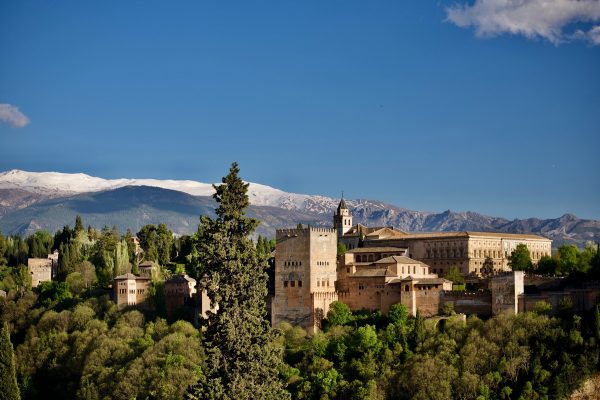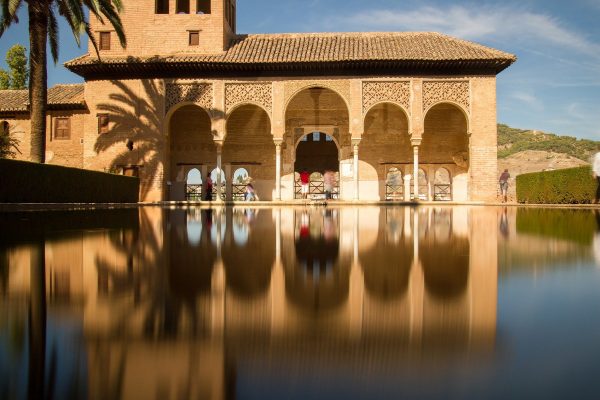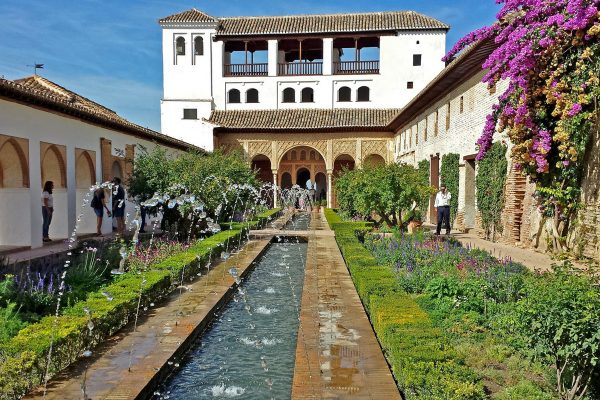
[nx_spacer]
Die Alhambra, die Stadtburg bei Granada (in Andalusien) ist eine der meistbesuchten Touristenattraktionen Europas. So wunderschön dieser maurische Baukomplex mit seinen Gärten und so malerisch die Lage am Fuß der Sierra Nevada (3.282 Meter!) sind: Mit der Alhambra verbindet sich eine traurige Geschichte, nämlich die Vertreibung der Muslimen und der Juden aus Spanien im Jahr 1492 durch die „Katholischen Könige“ Isabella und Ferdinand.
Im Januar des Jahres 1492 fiel mit der Belagerung von Granada der letzte muslimische Herrschaftsbereich auf der Iberischen Insel. Drei Monate später, am 31. März, wurde mit dem „Alhambra-Edikt“ die Vertreibung der Juden angeordnet, die nicht bereit waren, zum Christentum zu übertreten. Man geht davon, dass zwischen 90.000 und 122.000 Juden Spanien verließen. Das war ein großer Verlust, wirtschaftlich, aber auch für das kulturelle und wissenschaftliche Leben!
Vor 30 Jahren, am 1. April 1992, widerrief der spanische König Juan Carlos das Alhambra-Edikt als eine historische Wiedergutmachung für die Verbannung der sephardischen Juden vor 500 Jahren.
- Zwei Radiobeiträge dazu:
https://ogy.de/edikt
https://ogy.de/edikt2
Was bin ich froh, nicht in dieser Zeit vor 530 Jahren gelebt zu haben! Was bin ich dankbar dafür, in einer Demokratie leben zu dürfen, in der es Religionsfreiheit gibt. Möge Gott allen Menschen beistehen, die aufgrund ihres Glaubens schikaniert oder verfolgt werden!
Hier einige Fotos von unserem Besuch im November 2006:
![]()

The Alhambra and religious liberty
The Alhambra, the city castle near Granada (in Andalusia) is one of the most visited tourist attractions in Europe. As beautiful as this Moorish building complex with its gardens and as picturesque as its location at the foot of the Sierra Nevada (3,282 metres!) are: The Alhambra is associated with a sad history, namely the expulsion of the Muslims and the Jews from Spain in 1492 by the “Catholic Kings” Isabella and Ferdinand.
In January of 1492, with the siege of Granada, the last Muslim dominion on the Iberian island fell. Three months later, on 31 March, the “Edict of the Alhambra” ordered the expulsion of Jews who were unwilling to convert to Christianity. It is estimated that between 90,000 and 122,000 Jews left Spain. This meant a great loss economically but also for cultural and scientific life!
30 years ago, on 1st April 1992, the Spanish King Juan Carlos revoked the Alhambra Edict as a historical reparation for the exile of the Sephardic Jews 500 years ago.
How glad I am not to have lived in that time 530 years ago! How grateful I am to live in a democracy where there is religious liberty. May God help all people who are harassed or persecuted because of their faith!
![]()

La Alhambra y la libertad religiosa
La Alhambra es una de las atracciones turísticas más visitadas de Europa. Tan hermoso como es este complejo de edificios moriscos con sus jardines y tan pintoresco como es su ubicación a los pies de Sierra Nevada (¡3.282 metros!): La Alhambra está asociada a una triste historia: la expulsión de los musulmanes y los judíos de España en 1492 por los Reyes Católicos Isabel y Fernando.
En enero de 1492, con el asedio de Granada, cayó el último dominio musulmán en la isla ibérica. Tres meses después, el 31 de marzo, el “Edicto de la Alhambra” ordenó la expulsión de los judíos que no estuvieran dispuestos a convertirse al cristianismo. Se calcula que entre 90.000 y 122.000 judíos abandonaron España. Esto supuso una gran pérdida económica, pero también para la vida cultural y científica.
Hace 30 años, el 1 de abril de 1992, el rey Juan Carlos revocó el Edicto de la Alhambra como reparación histórica por el exilio de los judíos sefardíes hace 500 años.
¡Qué contento estoy de no haber vivido en esa época hace 530 años! Qué agradecido estoy de vivir en una democracia donde hay libertad de religión. ¡Que Dios ayude a todas las personas que son acosadas o perseguidas a causa de su fe!

